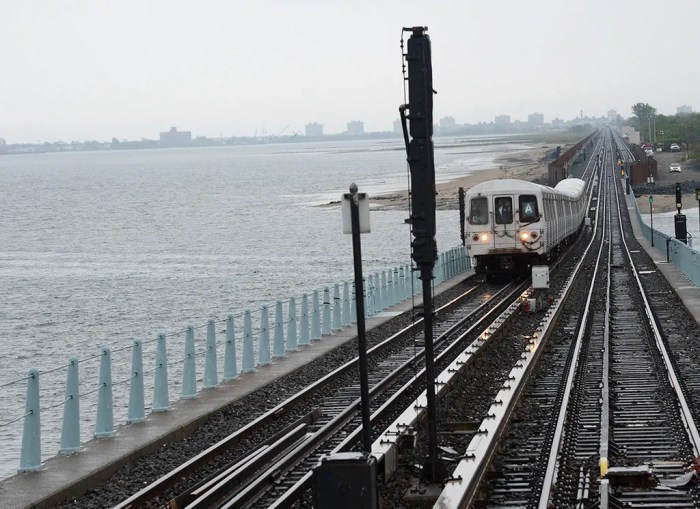By Daniel Massey
Although District 28 student leaders studied Norman Rockwell’s paintings at the Guggenheim Museum last Thursday, the diverse group could very well have been Rockwell’s subject matter if the artist were alive today.
The elementary and middle-school students, representing 28 different schools in Queens, toured the exhibit entitled “Norman Rockwell: Pictures for the American People,” and by the end of the day were analyzing such classics as “New Kids in the Neighborhood” and “The Problem We All Live With.”
Museum staff led a workshop on 1960s civil rights-related paintings as part of the District 28 Superintendent’s Student Leadership Forum, which seeks to nurture leadership and community-building skills among students in fourth through eighth grades.
At the conclusion of the session, students designed their own “Saturday Evening Post” covers, the publication for which Rockwell was a prolific illustrator.
Rockwell published his first cover for the “Saturday Evening Post” in 1916, and went on to create 322 covers for the weekly magazine over a 47-year span.
A lively question-and-answer session moderated by Deputy Superintendent Etta Carter and Guggenheim Senior Education Manager Sharon Vatsky and using four of Rockwell’s civil rights paintings as a backdrop, closed out the Guggenheim visit.
The students then discussed the four paintings: “The Four Freedoms,” “The Problem We All Live With,” “New Kids in the Neighborhood,” and “Do Unto Others.”
The 1967 work “New Kids in the Neighborhood” depicts three white children watching as two black children move into their neighborhood. Though the work reflects the problem of segregation in American society, it also conveys a sense of optimism.
“Doors are opening wider to include more people inside,” Vatsky told the students. “There are lots of areas where we’ve seen new groups coming into neighborhoods and making them richer, more diverse and opening them up to new groups of people.”
The students were then asked to place themselves in Rockwell’s 1967 painting “The Problem We All Live With,” which shows young Ruby Bridges walking under protection of federal marshals into a previously segregated New Orleans school.
“She was very confident,” said Crystal Hartley of JHS 217 in Jamaica. “But you can also be scared. People were throwing things.”
While they were never escorted to school by federal authorities, the students themselves have been part of a less dramatic but also historic integration in their Queens schools. The 28 students come from schools stretching from predominantly white Forest Hills to largely black South Jamaica in a district that has become more and more diverse with the influx of immigrants into the borough over the last two decades.
Shazia Khan’s PS 161 in Richmond Hill is home to a large number of Indo-Guyanese and Sikh students, while the roll at Casey Kim’s PS 139 in Rego Park includes a large student population from the former Soviet republics.
Carter and the students talked about how Rockwell was influenced by the America he saw around him, and the group discussed what would inspire them to become artists.
Carter related how she grew up attending segregated schools in rural Arkansas. “It wasn’t until I was 12 years old that I got a new book,” she said. “It had the name of the white school and it had all the names of the children that had used the book before.”
Many of the students said they would be inspired by the diversity of the world around them.
“I would show people holding hands, people of different religions not fighting with each other,” said Andrew Auerbach of PS 175 in Rego Park.
Richie Khan of PS 50 in Jamaica was struck by Rockwell’s “Family Tree,” and said he would draw inspiration from similar subject matter. “Wherever there is somebody, that somebody has history,” he said.
The Superintendent’s Student Leadership Forum was launched in 1999 following the killings at Columbine High School, in Colorado, to give students a way to voice their feelings on school violence.
Since its inception, the program has expanded to give students an opportunity to examine a variety of issues that affect their communities. They interviewed Gov. George Pataki, met with then-Police Commissioner Howard Safir to discuss community policing and talked about undercounts with Census 2000 officials.
“There’s nothing in the borough like this for primary or middle- school students where the superintendent calls on them to deal with the issues of the day,” said District 28 spokesman Ron Levine.
Reach reporter Daniel Massey by e-mail at Timesledger@aol.com or call 229-0300, Ext. 156.


































